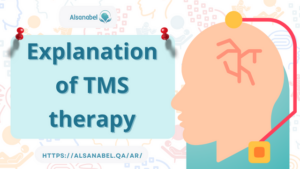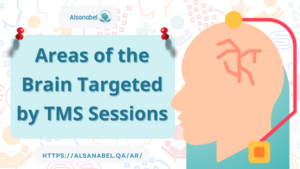How Does TMS Sessions Work to Stimulate Brain Activity? 2024
- Category Mechanism of TMS
Embarking on a journey to understand how Transcranial Magnetic Stimulation (TMS) works to enhance brain activity is like unlocking a door to a realm of cognitive exploration. As we unravel the mysteries of TMS sessions, we gain a deeper appreciation for the potential implications on cognition and the intricate network of brain regions influenced by this cutting-edge technology. Join us as we delve into the realm of TMS and discover the science behind how it modifies neuronal activity in the brain, paving the way for new perspectives on cognitive studies.
Explanation of TMS therapy
Transcranial Magnetic Stimulation (TMS) is a non-invasive technique used to stimulate brain activity and has been found to be effective in treating various mental health conditions and neurological disorders. TMS works by delivering magnetic pulses to specific areas of the brain, influencing neuronal activity. Research has shown that TMS can help improve mood, cognitive function, and pain perception in some individuals. However, the effectiveness of TMS therapy can vary depending on the individual and the specific condition being treated. It is important to consult with a healthcare provider to determine if TMS is a suitable option for your specific needs.

Preparation for a TMS Session
- Before starting TMS treatment, a comprehensive evaluation is conducted by a healthcare provider to determine if the patient is a suitable candidate for TMS therapy.
- The patient’s medical history, current medications, and any potential contraindications are reviewed.
- Patients may be advised to avoid consuming caffeine or nicotine before their TMS session, as these substances can affect the brain’s response to stimulation.
- It’s essential to inform the healthcare provider about any metal implants or objects in the body, as they may interfere with the magnetic field generated during the TMS procedure.
Procedure of TMS Treatment
- During a TMS session, the patient is comfortably seated in a chair, fully conscious and alert.
- The TMS device consists of a coil that is placed gently against the scalp, targeting specific areas of the brain associated with mood regulation.
- The coil generates magnetic pulses that penetrate the scalp and skull, reaching the targeted brain regions.
- These magnetic pulses stimulate the neurons in the brain, modulating their activity and promoting the release of neurotransmitters associated with mood regulation, such as serotonin and dopamine.
- The duration of each TMS session typically ranges from 20 to 40 minutes, depending on the treatment protocol prescribed by the healthcare provider.
- Patients may experience a tapping or clicking sensation on the scalp during the TMS session, along with a mild discomfort or tingling sensation in the treatment area.
- TMS treatment is usually administered daily, five days a week, for several weeks, as determined by the healthcare provider.
- Throughout the course of treatment, the healthcare provider monitors the patient’s progress and adjusts the treatment parameters as needed to optimize therapeutic outcomes.
Mechanism of TMS on Brain Activity
Transcranial Magnetic Stimulation (TMS) works by using electromagnetic induction to generate electrical currents within the brain. Here’s an overview of the mechanism of TMS on brain activity:
- Electromagnetic Induction: TMS involves placing a coil near the scalp, through which brief but intense magnetic pulses are delivered. These pulses create rapidly changing magnetic fields that penetrate the skull and induce electrical currents in the underlying brain tissue.
- Neuronal Activation: The magnetic pulses generated by TMS depolarize neurons in the targeted brain region. This depolarization triggers action potentials (nerve impulses) in the neurons, leading to the activation of neural circuits.
- Neurotransmitter Release: TMS-induced neuronal activity stimulates the release of neurotransmitters, such as serotonin, dopamine, and glutamate. These neurotransmitters play crucial roles in mood regulation, cognition, and other brain functions.
- Neuroplasticity: Repeated sessions of TMS can induce neuroplastic changes in the brain. Neuroplasticity refers to the brain’s ability to reorganize and form new neural connections in response to experience or injury. TMS may promote neuroplasticity by modulating synaptic strength and facilitating synaptic remodeling in the stimulated brain regions.
- Network Effects: TMS not only affects the directly targeted brain region but also influences interconnected brain networks. The stimulation of one brain area can lead to widespread effects on functional connectivity within neural networks implicated in mood, cognition, and behavior.
- Long-Term Effects: The cumulative effects of repeated TMS sessions can lead to sustained changes in brain activity and connectivity beyond the duration of individual treatment sessions. These long-term effects may contribute to the therapeutic benefits observed in conditions such as depression, anxiety, and chronic pain.
Areas of the Brain Targeted by TMS Sessions
Transcranial Magnetic Stimulation (TMS) can target various brain regions, depending on the specific condition being treated or the desired outcome. Here are some common brain regions targeted by TMS and their associated effects on specific brain functions:
Dorsolateral Prefrontal Cortex (DLPFC):
- Function: Involved in executive functions, such as working memory, decision-making, and cognitive control.
- TMS Effects: Stimulation of the DLPFC with TMS has been used to modulate cognitive functions and alleviate symptoms of depression, obsessive-compulsive disorder (OCD), and addiction.
Motor Cortex:
- Function: Controls voluntary muscle movements and motor coordination.
- TMS Effects: TMS applied to the motor cortex can induce muscle contractions and assess motor function. It is also used in motor rehabilitation following stroke or spinal cord injury.
Primary Visual Cortex (V1):
- Function: Processes visual information received from the eyes.
- TMS Effects: Stimulation of V1 with TMS can produce phosphenes (perceptual flashes of light) and temporarily disrupt visual processing, providing insights into the functional organization of the visual system.
Auditory Cortex:

- Function: Processes auditory information received from the ears.
- TMS Effects: TMS applied to the auditory cortex can affect auditory perception and has been used to study auditory processing and treat conditions such as tinnitus.
Anterior Cingulate Cortex (ACC):
- Function: Involved in emotional regulation, pain perception, and cognitive control.
- TMS Effects: Stimulation of the ACC with TMS has shown promise in modulating mood, reducing pain sensitivity, and improving cognitive flexibility.
Posterior Parietal Cortex:
- Function: Plays a role in spatial cognition, attention, and sensorimotor integration.
- TMS Effects: TMS applied to the posterior parietal cortex can influence spatial perception, attentional processes, and motor planning.
Subgenual Cingulate Cortex (SGC):
- Function: Implicated in mood regulation and emotional processing.
- TMS Effects: Targeting the SGC with TMS has been investigated as a potential treatment for depression, with studies demonstrating improvements in mood and reduction of depressive symptoms.
I hope this article was able to provide you with a better understanding of how TMS sessions can stimulate brain activity. If you have any questions or would like to share your own experiences with TMS therapy, please feel free to leave a comment below. Thank you for reading!









